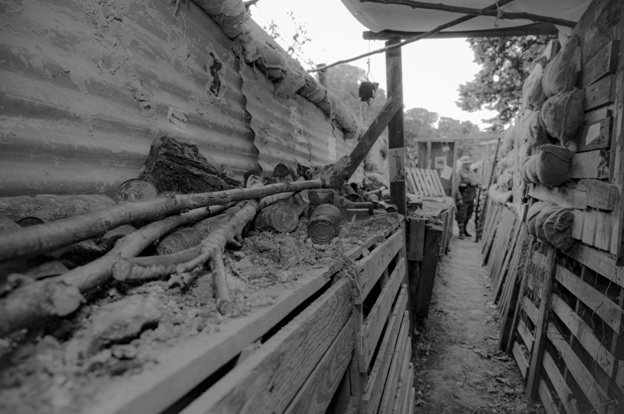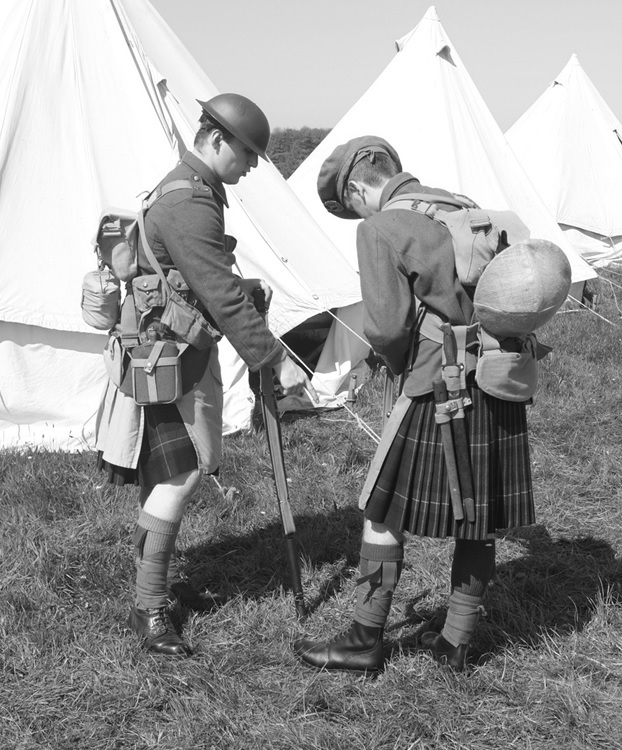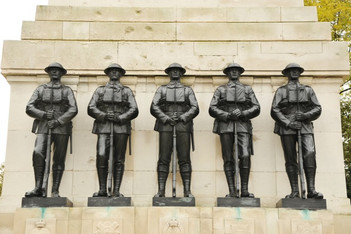About Different Lee-Enfield Rifles for Sale
Jan 4th 2024
The Lee-Enfield rifle is one of the most successful magazine-fed, bolt-action rifles of all time, and by far one of the most widely used, with more than 17 million having been produced since the model was first introduced in 1895.
British Commonwealth Forces, famously the BEF in WWI, were widely equipped with Lee-Enfield rifles, and Commonwealth countries around the world such as Australia, Canada, and India have also widely used them.
In fact, the AEF’s doughboys in the First World War are said to have carried an M1917 “American” Enfield more often than our own service rifle, the M1903 Springfield, because Enfields were more readily available for issue at the time. Medal of Honor recipient Alvin York himself did not carry a Springfield, but an Enfield.
But the Lee-Enfield rifles for sale that you are liable to see in collectibles and military surplus rifle collections around the world (or the internet) did not have their origin with that name.
The mag-fed Enfield you know started as the MLM, or “Magazine, Lee-Metford” Mk1 rifle, first introduced in 1889, 6 years before the first “official” Lee-Enfield.
The first MLM was not without its problems. It fired a black-powder cartridge; not a problem on its own, but the introduction of newer, hotter-burning propellants meant that the shallower rifling of the MLM didn’t last all that long. Some Metford rifles needed their barrels replaced after as little as 6,000 rounds.
Herein lies the introduction of the name “Enfield,” which was actually a new type of rifling designed to combat premature barrel wear. This new rifling was developed at the Royal Small Arms Factory Enfield, or RSAF, and lent its name to the new rifles produced with it, the MLE (sometimes referred to as “Emily”), or “Magazine, Lee-Enfield” Mk1 rifles.
The first MLE (Mk1) preserved most of the original features of the MLM, including a 30” barrel. In consequence, at least partially, these are sometimes referred to as “Long Lees” although shorter length carbines were also developed for them.

Around the turn of the century, the British War Department decided to standardize service rifle length to 25”, halfway between the 30” and 20” (carbine) lengths, streamlining production.
This was the “smelly” or “SMLE,” “Short, Magazine, Lee-Enfield” rifle.” The new rifle was shorter, but the magazine, receiver and barrel design were all effectively unchanged in the new variant. The first of these, the SMLE Mk1, could be loaded from above, through the open action, with a 5-round charger, facilitating easier, faster reloads.
The SMLE was further refined through the development of the MkIII which featured a charging bridge over the receiver, and then again by removing some features to streamline production due to increased demand as a result of the outbreak of the First World War.
Throughout most of the First World War, particularly along the Western Front in which the British Expeditionary Force was largely engaged against the Imperial German Army, the British adopted the SMLE MkIII rifle.
With a ten-round mag, this variant was just more than 8 and a half pounds and was 44.5” inches long. It was also equipped with a 17” bayonet, the 1907 pattern, a sword-style bayonet that was intended to deliver the extra length an infantryman would need (at least in theory) to engage a mounted opponent.
These MkIII SMLE rifles could also be loaded with 11 rounds if the soldier loaded the chamber before charging the magazine, keeping one “up the spout.” This gave the British an advantage over their German adversaries, who carried 5-round Gewehr ‘98 rifles.
The short bolt throw of the SMLE MkIII, a product of the short cartridge and action, enabled impressively fast cycling rates in the hands of a skilled soldier - up to 15 rounds per minute, in some instances. In fact, in some areas of the Somme, the British fired so ferociously in the offensive that some Germans believed they were beset by machine gun crews. In fact, they were listening to the fierce fusillade of Tommy, armed only with a bolt-action Lee-Enfield.
Before the outbreak of the Second World War, the Royal Small Arms Enfield engineers simplified the overall design of the rifle platform in order to streamline production, making it faster and cheaper.
This marks the beginning of the Enfield No. 4, which was actually heavier than the earlier No.1 MkIII, because it had a heavier barrel. It was also outfitted with a different bayonet, a spike bayonet nicknamed “pigsticker” by soldiers.
The Enfield was also converted into a “jungle carbine,” so-called properly by the nomenclature of Rifle No. 5 Mk1. Its development was spurred by jungle fighting in the Pacific Theater of Operations against the Imperial Japanese, in which the British determined that they needed a shorter, lighter rifle that offered superior maneuverability and mobility.
The Enfield “jungle carbine,” produced between 1944 and 1947, was only 39.5” overall and had shed about a pound from its forebears, tipping the scales at 7 lbs 1 oz. Because these rifles were outfitted with a large flash hider, they were not compatible with the No. 4’s “pigsticker” bayonet, and so a bladed version, the No. 5 Blade Bayonet, was developed for it.
In addition to these, the Lee-Enfield was also converted into a number of other variants, including .22 training models (the Lee-Enfield No. 8), as well as a number of different variants of the No. 4 intended for use as sniper rifles. The Enfield was also converted into smoothbore and shotgun configurations, as well as a few civilian variants.
After World War II, some Enfield rifles were even converted to fire the new 7.62x51mm NATO cartridge.

On the Hunt for a Lee-Enfield Rifle for Sale?
Admittedly, the scope and breadth of this short article only scratches the mere surface veneer of the rich history of Lee-Enfield rifles. Many variants were produced that are not mentioned here, and a full article could be dedicated to each of the variants that are listed.
As a result, it can quickly become quite a chore to identify a specific Lee-Enfield for sale, as well as its history and value. If you are looking for a rifle or even have one and need help identifying it, get in touch with us at 610-250-3960 and we will be happy to help.

